The Virginia Blue Ridge was known far and wide in the late-1950’s and early-’60’s as a bastion of steam when all the other American railroads, big and small, were quickly scrapping their steam locomotives in favor of diesels. In 1958 the VBR’s president, Kenneth Cobb stated that it was certain that the railroad would keep running steam far into the future. “We’ve got four engines (Nos. 5, 7, 8 & 9) exactly alike. All were built to Government specifications and the parts from one engine can be used for another engine. If it gets to the point where we are in really bad shape, we can start cannibalizing one of the engines.”
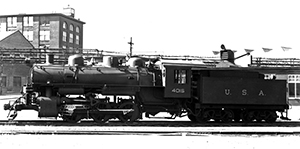
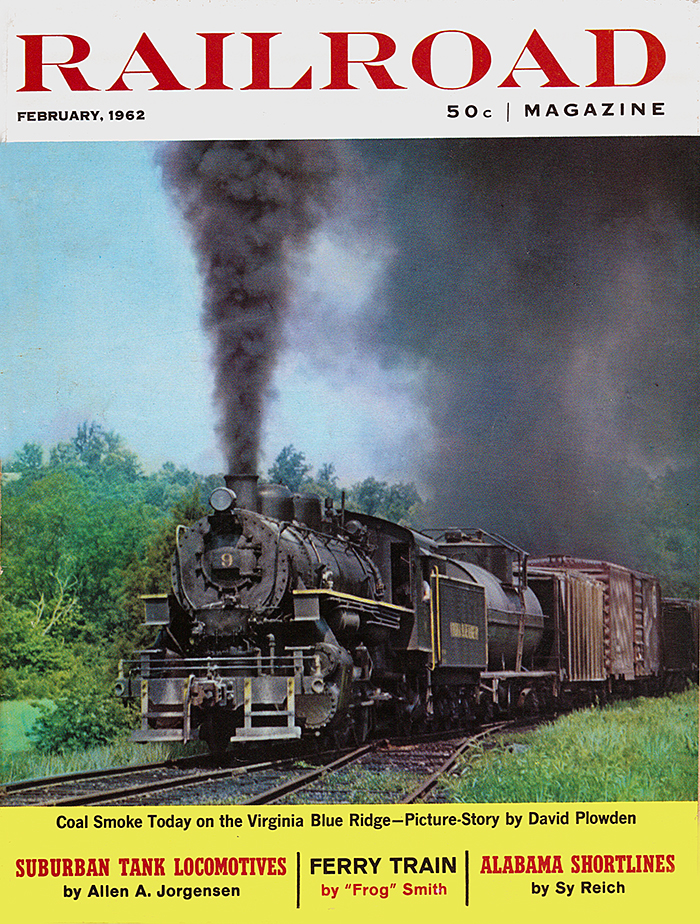
“Besides, we were able to buy all these engines at a very reasonable price ($25,000. for all four) and they were hardly ever used by the Government. On the other hand, we’d have to spend $250,000. to dieselize and change our whole shop over. We’re not equipped for diesels here.”
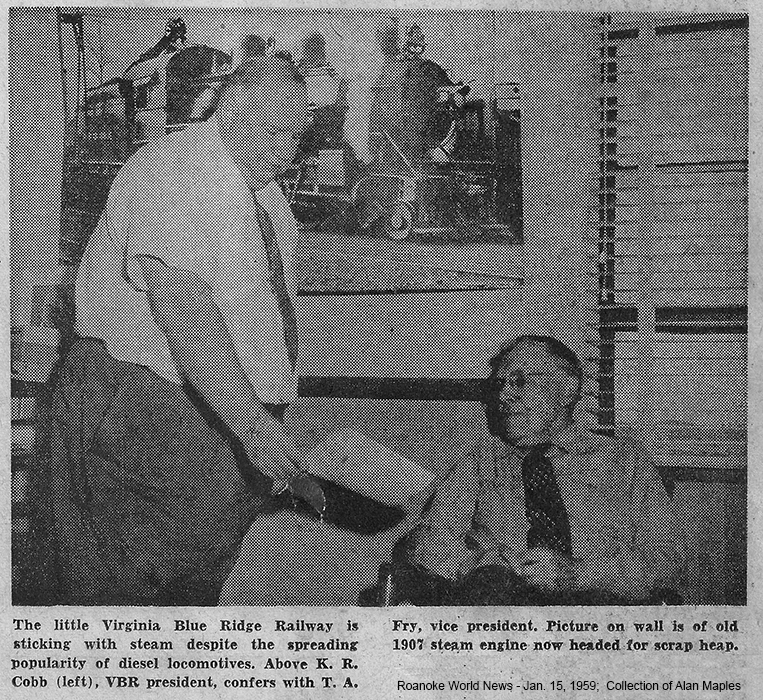
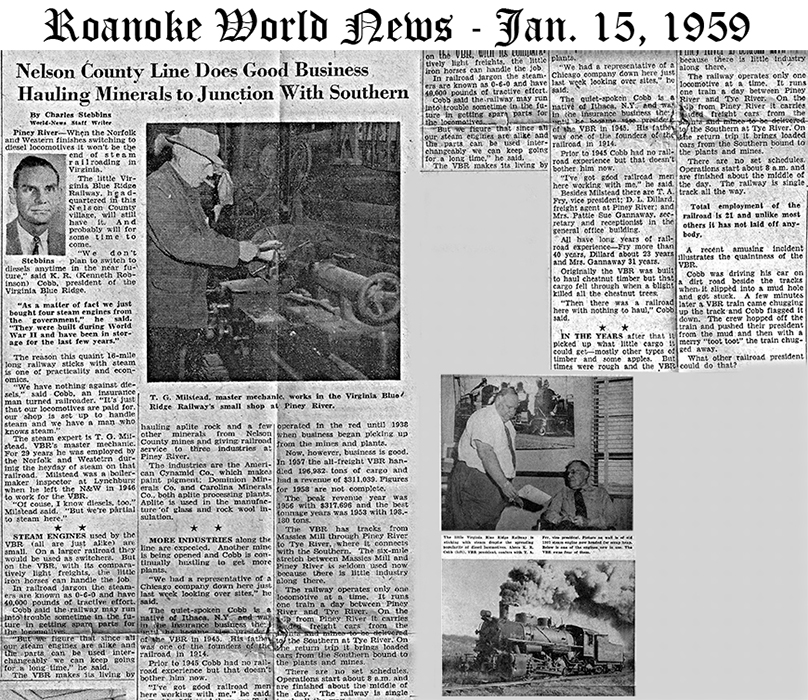
Of great interest is a surviving internal management report from 1946 that discusses VBR’s decision to remain with steam power and suggests re-equipping the railroad with at least one, 50-year old Norfolk & Western Railway (N&W) 4-8-0 “Mastodon” – type steam locomotive. The N&W was slowly retiring it’s steam engines and the old “Mollies” (as they were nicknamed) were running out their final days on N&W branch lines. The VBR document reads in part: “The N&W Railroad have in the past sold their Model M, M-1, and M-W under $5,000. These engines will weigh approximately 90 tons and are more modern than any of ours. They would easily carry any reasonable load over Rose Hill…without doubling.” At the time, VBR had three locomotives (Nos. 1, 2 & 3) with a combined age of 128 years. The presence of an N&W alumnus as the short line’s new Master Mechanic may have influenced management’s thinking on future motive power. Ultimately the VBR purchased two war surplus 0-6-0’s (Nos. 4 & 5) instead.
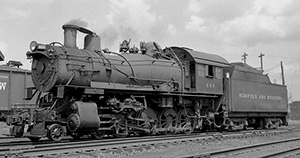
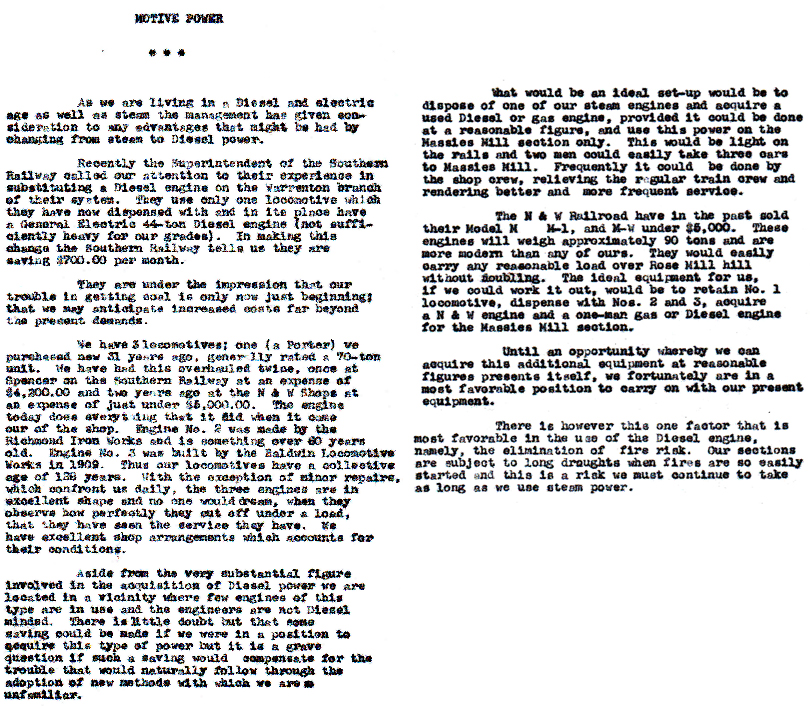
Additionally, there is some rather fascinating surviving internal correspondence that reveals, beginning in the late-1940’s the VBR actually considered purchasing diesels. It appears to have come down to a disagreement between the two principals at the railroad…John Powell and Howard Cobb. Powell, the VBR’s president in Washington, D.C., favored going all-diesel, as did Mr. T. A. Fry, the VBR vice-president in Massies Mill, VA. Howard Cobb, who resided in Ithaca, NY, is not mentioned by name in the letters, but it is clear that he was strongly opposed to diesels.
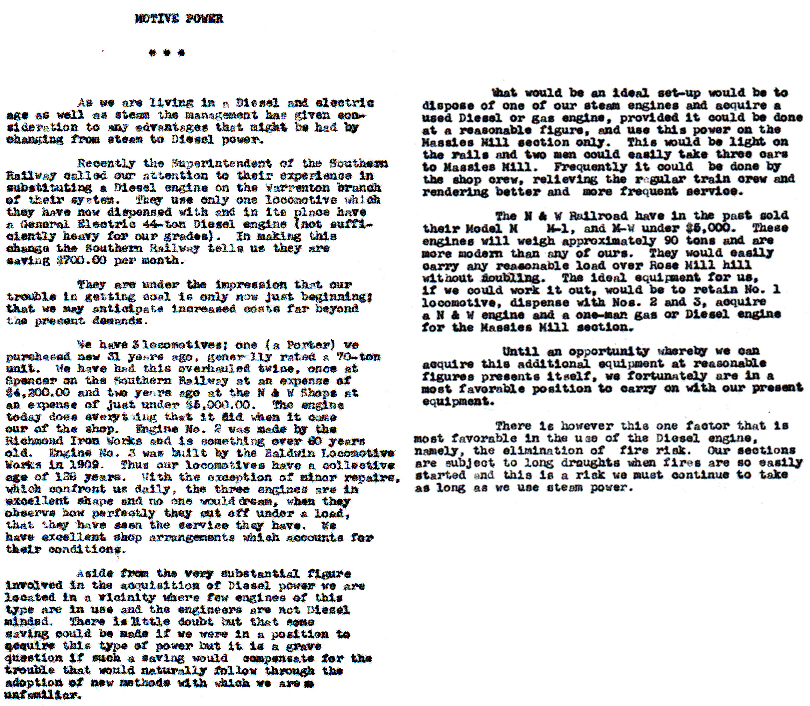
On February 15, 1951 Powell wrote to Fry: “I don’t know there is anything I can say but we know the reason why we have not gone Diesel before and I doubt there being any way we can change the method, although the time may come when we can. I think Ken [Howard Cobb’s son] sees the necessity of it all right but is at a loss to know how to take care of the other matters in Ithaca. It is too bad we all have to suffer this way.”
On February 17, 1951 Fry replied to Powell: “Every time the word Diesel is mentioned I look back and figuratively weep for I cannot do anything else but feel we lost a golden opportunity to change over when we purchased engines 4 and 5 and we continue to compound the error.”
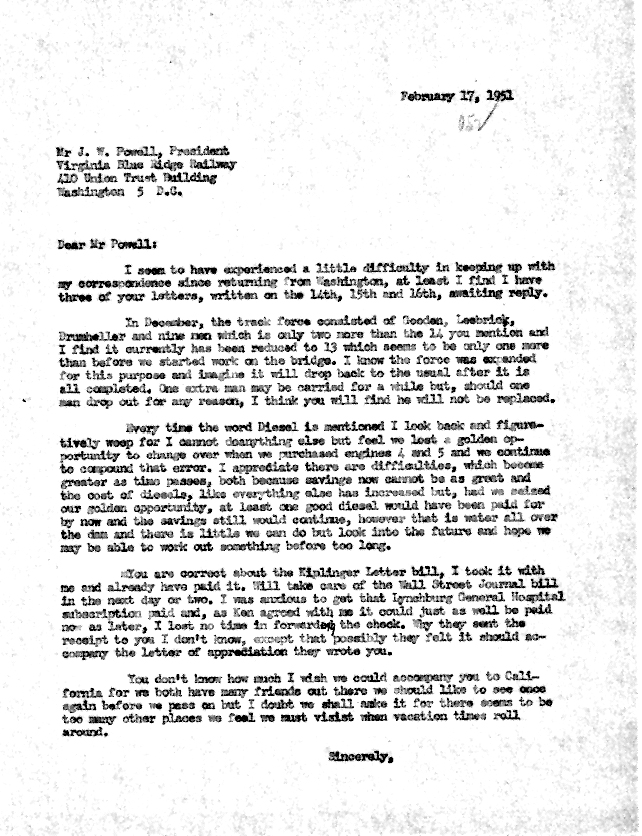
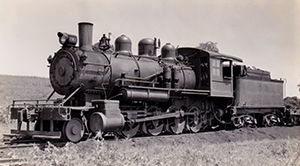
The VBR began its stable of steam engines with the acquisition in 1915 of No. 1, the only locomotive that was purchased brand new. No. 1 was a 2-8-0 ‘Consolidation’ – type freight locomotive constructed by H.K. Porter. No. 1 served the VBR for 35 years until she was scrapped in 1953.
No. 2 was another 2-8-0 ‘Consolidation’ freight engine that was purchased second-hand. It was built in 1895 by the Richmond Locomotive Works for the Southern Railway as No. 222, and later renumbered by the Southern to 186. The Southern sold the locomotive to the VBR on September 22, 1938. In the nine years the engine was on the VBR, it was never relettered or renumbered into the VBR scheme and continued to retain its Southern number “186”. It was scrapped in 1947.
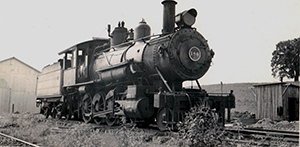
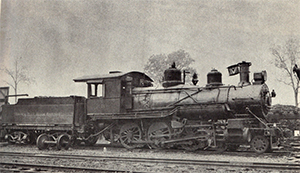
No. 3 was a 4-6-0 ‘Ten-Wheeler’ – type locomotive that was acquired third-hand on November 10, 1941 from the Georgia & Florida Railroad where she was numbered 173. The engine was originally built for the Augusta Southern Railroad by the Baldwin Locomotive Works in 1909 as their No. 73. Very light on her feet, the locomotive was used only occasionally by the VBR, and was cut up for scrap in 1946.
(1st) No. 4 is a locomotive that strangely enough, has managed to slip through the cracks of VBR history. Originally built by the Vulcan Iron Works in October 1909, the engine was known by the Vulcan number “1436”. This diminutive 0-4-0 ‘Saddletank’ (named for the water supply tank straddling the boiler) engine was constructed for the Old Dominion Soapstone Corporation at Damon, VA as their No. 2. When Old Dominion Soapstone was merged into the Virginia Alberene Corporation in February 1917, the little locomotive retained it’s number “2” and continued on in service until December 1, 1931. In April 1935, Virginia Alberene Corp. was sold to the Alberene Stone Corporation in Schuyler, VA. Although the ownership had changed, the engine continued to retain its number “2” and remained out-of-service on the quarry property. According to Virginia Blue Ridge Railway documents, the engine was sold to the VBR In June of 1942, where it was given the road number “4”.
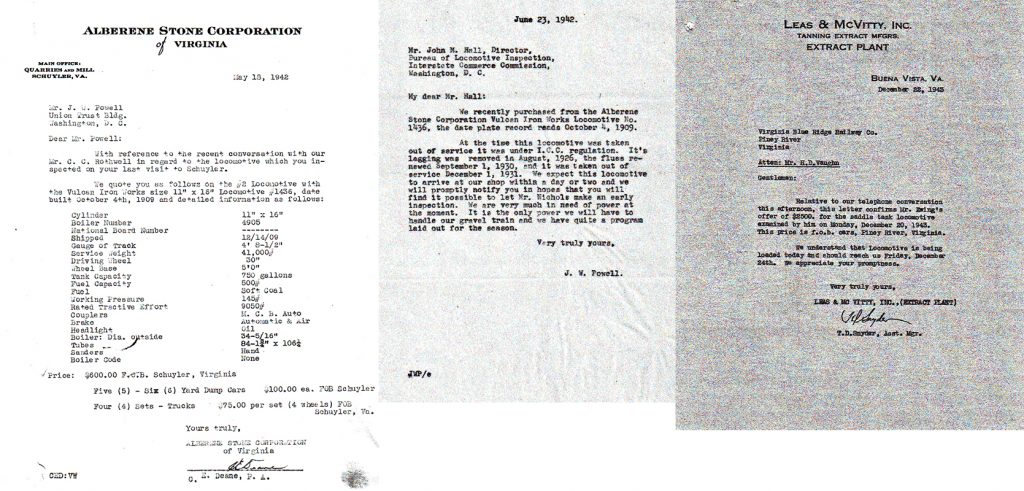
The VBR used No. 4 for less than a year-and-a-half to haul ballast trains as the railroad upgraded its roadbed to accommodate the increase of traffic from the aplite plants and the Southern Mineral Products facility. The onset of World War II brought even further carloadings to the Virginia Blue Ridge, and brought great prosperity to the railroad. In the best “I-Think-I-Can” imagery, tiny No. 4 was the locomotive that made the resurgence of the VBR possible during the first dark days of World War II, and for this reason, she should be recognized as an important part of the VBR’s history.
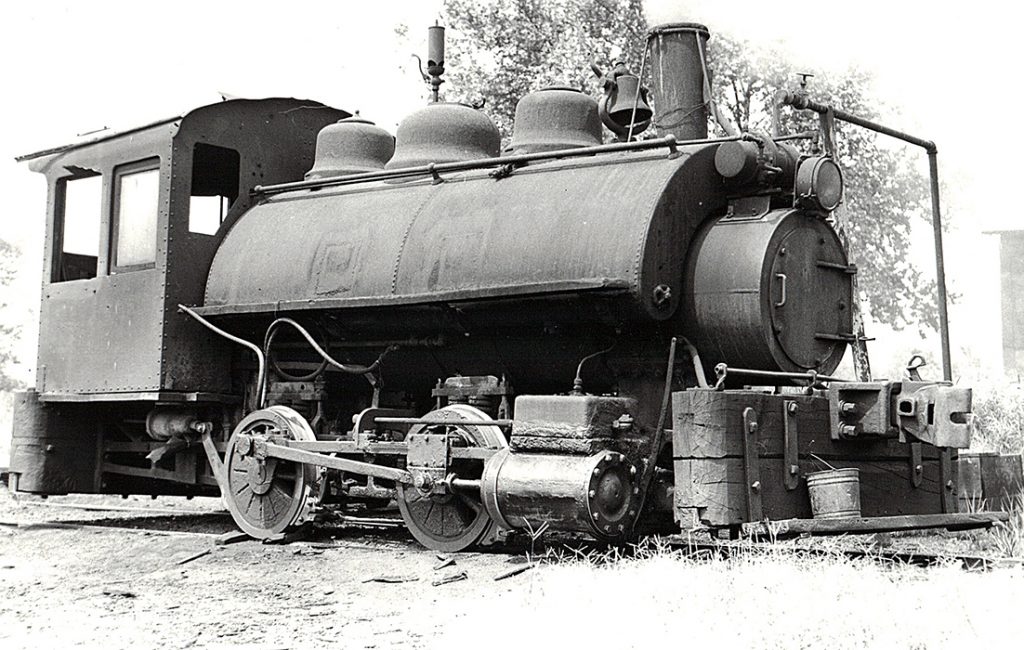
Photo Credit: D. Wallace Johnson; Collection of Thomas Lawson, Jr. (Courtesy of Alan Maples)
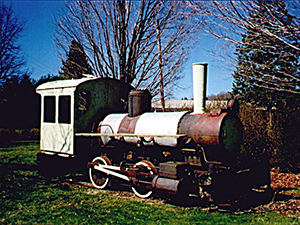
1st No. 4’s story does not end here, though. After her ballast train assignment was completed, the VBR sold the engine in December 1943 to Leas & McVitty, Inc., a tanning extract manufacturer in Buena Vista, VA. She was used at the company extract plant until being taken out of service in the late-1950’s. In 1962, she was sold to Charles Wassum, who displayed the engine for years in front of a motel in Marion, VA. It was eventually purchased by a private collector, Will Harris, who moved it to his property in Goshen, VA where it survives (minus its distinctive saddletank) today.
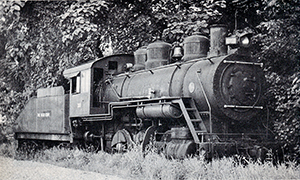
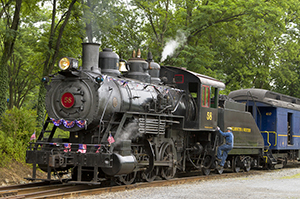
2nd No. 4 was an 0-6-0 switching engine that the VBR acquired fourth-hand from the War Assets Administration (WAA) on February 17, 1947. This particular engine was originally constructed by Baldwin in 1907 as No. 58 of the Atlanta, Birmingham & Atlantic Railroad (ABA). In November 1926 she became Atlanta, Birmingham & Coast Railroad No. 27. Her third owner was railroad equipment broker Georgia Car & Locomotive Co. who in turn sold her to the U.S. Army in 1944 (Army number 6961). In 1947 the WAA sold the locomotive to the VBR. Having already briefly owned and sold a previous No. 4 (1st) locomotive, VBR decided to reissue the road number “4” to their new acquisition… whereupon for record keeping, it is known to historians as “2nd No. 4” In 1947 the WAA sold the locomotive to the VBR. After a derailment around 1949 in which she flipped over on her side, VBR crews tended to steer clear of the engine and from then on she was hardly used. In May 1951 she was sold to the Mead Corporation at Lynchburg, VA where she became No. 300. Very fortunately (and after several private owners), the engine survives today in operating condition on the Wilmington & Western Railroad in Wilmington, Delaware, renumbered back to its original ABA “58”.
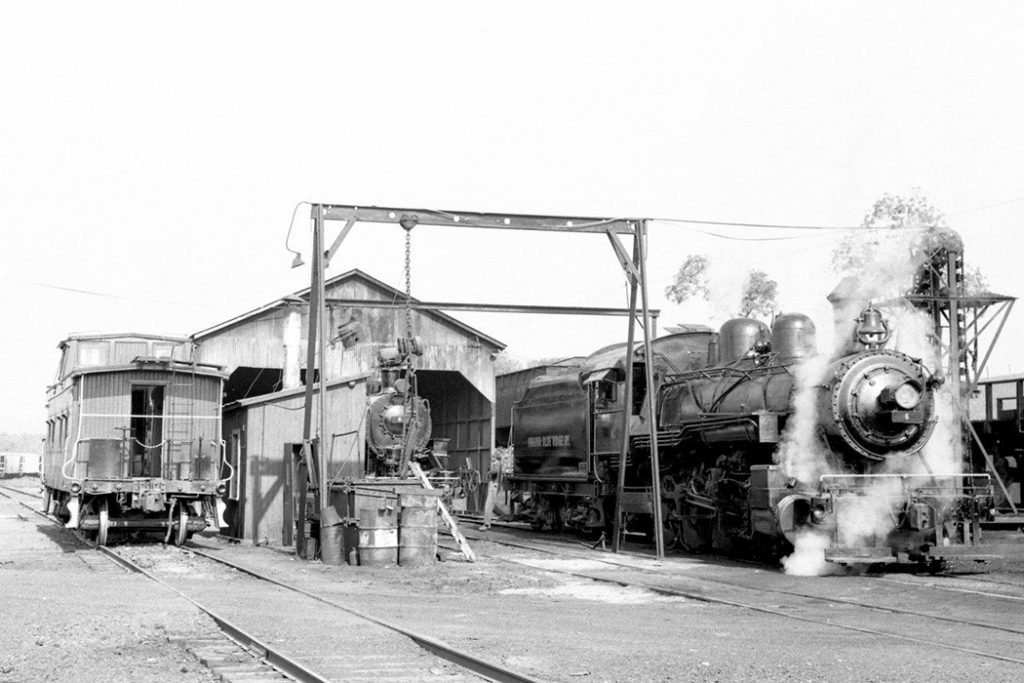
We now come to the final five steam locomotives owned and operated by the VBR. They are the most famous, and the most widely-photographed of all the railroad’s locomotives. Today, four of the engines survive in preservation, but all are now located far from their Old Dominion stomping grounds. Amazingly, three of the former VBR engines are located in New Jersey. It is extremely rare for so many locomotives from such a small railroad to survive intact long after the company has ceased to exist.
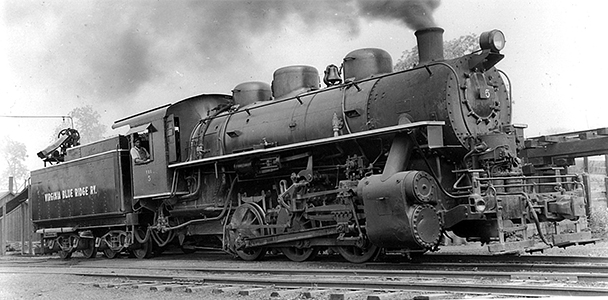
Engine No. 5 came to the Virginia Blue Ridge from the War Assets Administration on February 17, 1947 along with No. 4, and was another U.S. Army 0-6-0 originally numbered 4039, but unlike No. 4, it was a much newer locomotive. The engine was built by the American Locomotive Company in November 1942. Upon arrival at the VBR it was given the road number “5” and remained in active freight service until the railroad began diesel operations in August 1963.
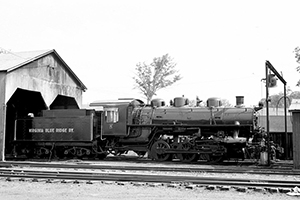
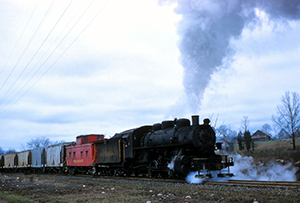
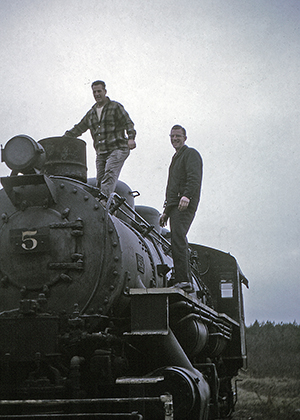
In late-1965, No. 5 was purchased by Earle Gil for use on his Morris County Central Railroad (MCC) in New Jersey and was shipped North. According to surviving VBR records, No. 5 had been sold earlier in 1964 to the “Steam Trains, Inc.” group that was forming the nucleus of the New Hope & Ivyland Railroad (NH&I) operation in New Hope, PA, but due to non-payment, the engine was instead re-sold to Earle Gil at the Morris County Central. The NH&I never paid the last installment due and had insisted on switching No. 5’s tender with No. 7’s due to mechanical problems. The VBR refunded the NH&I’s money in January 1966.
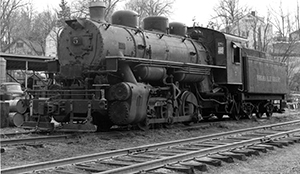
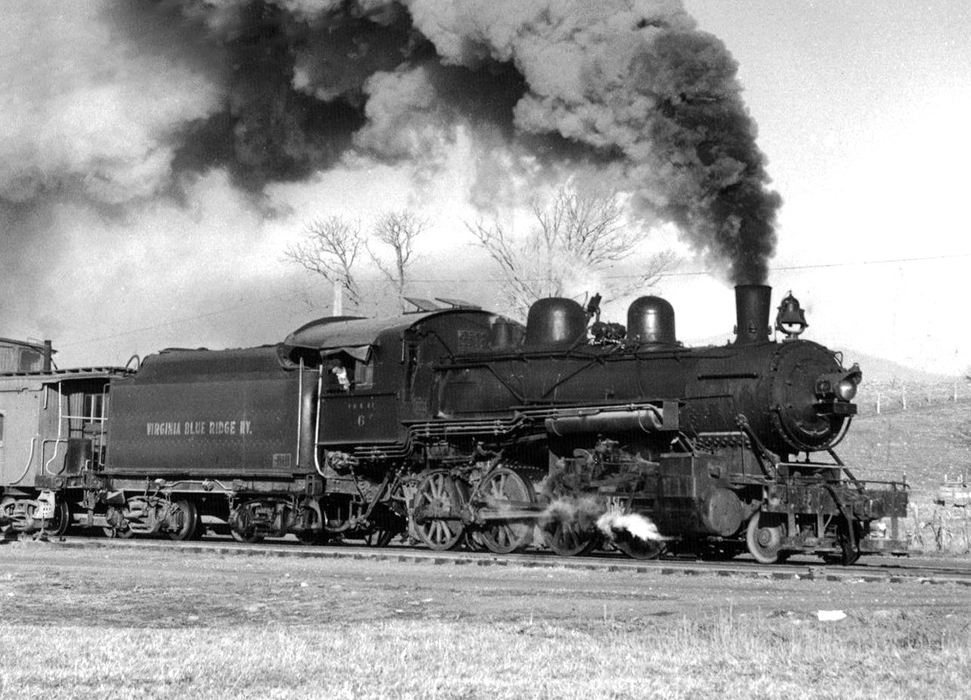
VBR No. 6 is what can only be described as an elegant and classic example of early 20th Century American locomotive design and craftsmanship. Built in November 1907 for the Southern Railway (SR), her original road number was 385. Designed for high speed freight service, with pulling power to spare, she was one of a group of 25 H-4 2-8-0 Consolidation locomotives that were placed in service on SR’s lines throughout Dixie. For 45 years No. 385 provided excellent service to the Southern Railway, but the day came when she was retired from active duty and sold to the Virginia Blue Ridge Railway on November 17, 1952.
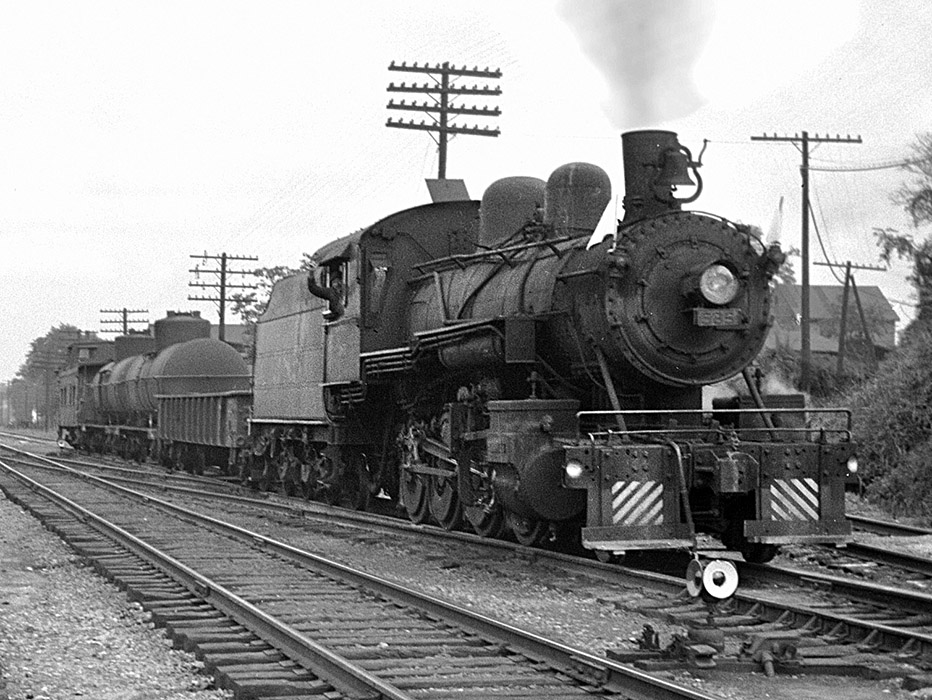
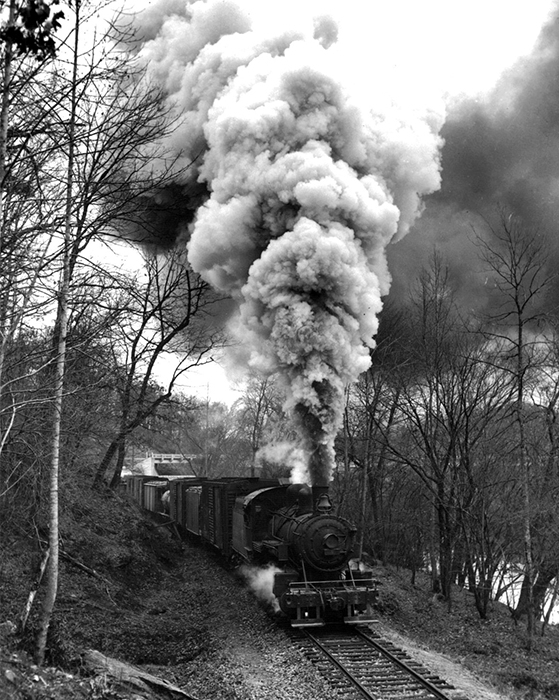
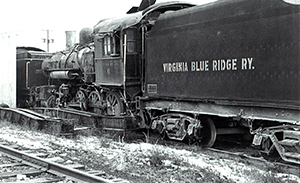
‘The Big Engine’ as she became known on the VBR, had a very short service life on “Th’ Blue Ridge”. After only 4 years of operation, she was taken out of service and set aside for scrap in November 1956. This was due to the need for an expensive and labor-intensive re-fluing of the boiler, as well as a dwindling supply of spare parts. No. 6 was officially retired by the VBR on April 1, 1959. In May 1963, with time running out for old No. 6, she was purchased by New Jersey resident Earle H. Gil who had the locomotive shipped to Morristown, NJ where he completely restored the engine to operating condition in only 3 months time. Gil’s idea was to operate an excursion railroad using vintage steam locomotives to recreate the glory years of American railroading. During the time he spent reactivating the engine, Gil also renumbered it back to its original Southern Railway “385”, as well as retro-fitting the firebox and fuel supply from coal to oil-burning. Gil’s excursion line was known as the Morris County Central Railroad (MCC) and operated out of Whippany and later, Newfoundland NJ from 1965 until 1980. After the MCC ceased operating, No. 385 changed hands many times until she was donated to the Whippany Railway Museum in 2007. She made an emotional return home to Whippany in early-2008 where she was reunited with her former MCC and VBR stablemate, No. 4039 (VBR 5).
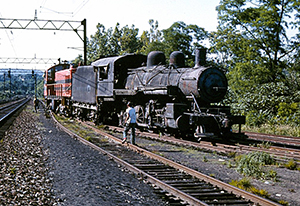
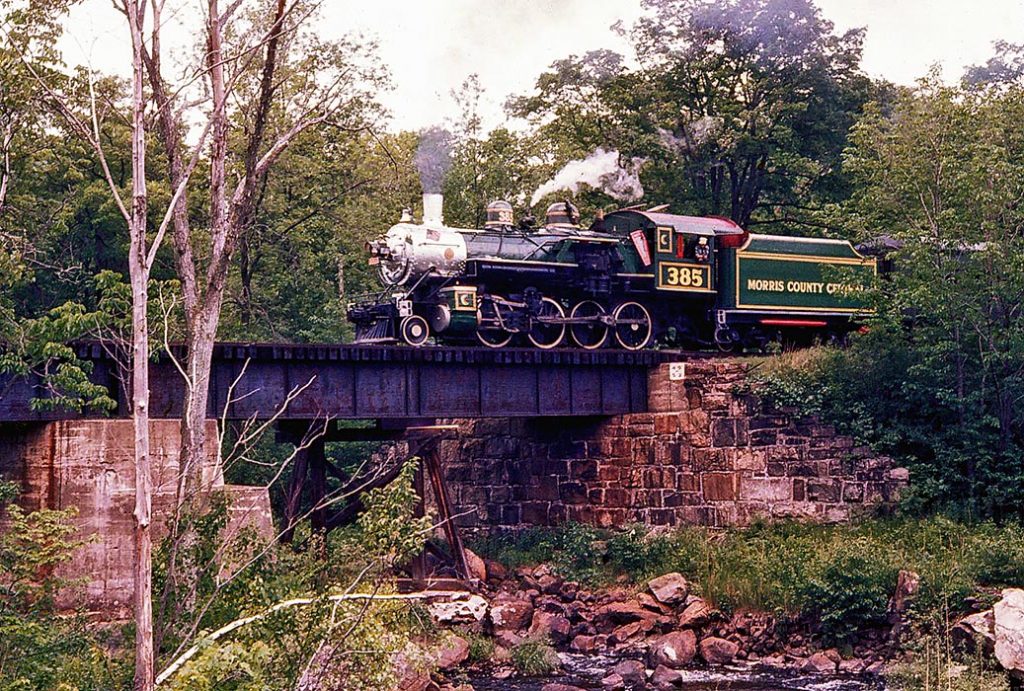
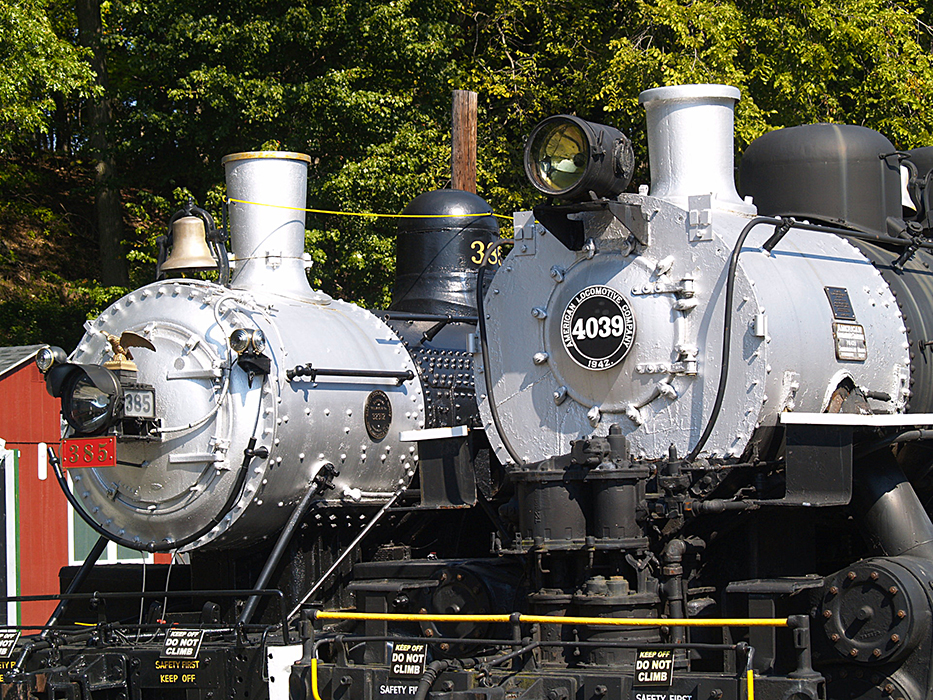
It is at the Whippany Railway Museum, where these two former VBR steam locomotives are secure in preservation and their colorful history can be appreciated by all who come to visit.
VBR No. 7 was yet another U.S. Army 0-6-0, originally numbered 4061 that had been built by the Lima Locomotive Works in 1944. Of the five VBR steam locomotives of the 1950’s era, No. 7 is the only one that did not survive in preservation. After WWII ended the War Assets Administration sold the locomotive in 1947 to the Norfolk & Portsmouth Belt Line Railroad, a Virginia terminal rail line, where she was renumbered “51”. Nine years later she was sold to the Virginia Blue Ridge and arrived at Piney River on April 20, 1956. Of the four ex-Army 0-6-0’s owned by the VBR, No. 7 looked different from the rest. She carried one large sand dome atop her boiler, whereas Nos. 5 and 8, and later No. 9 (acquired in 1958), were identical and had two smaller domes for sand.
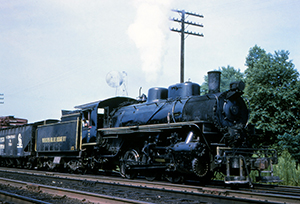
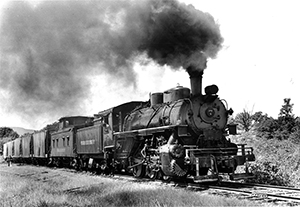
On May 19, 1957 the VBR operated its first railfan excursion train. On that day, No. 7 powered a special train that had been chartered by the Washington, D.C. Chapter of the National Railway Historical Society. The VBR portion of the excursion originated at Tye River where the charter train had come in off the Southern Railway. The train was made up of a baggage car and six Southern Railway coaches. Once No. 7 coupled onto the train, it made its way West to the aplite mines, with a brief lay-over at Piney River where the passengers were able to detrain and photograph the VBR’s facilities and locomotives. 2-8-0 No. 6 was prominently displayed for all to inspect, and the enginehouse and station were open to everyone. During the lay-over, nothing could have looked more out-of-place in rural Piney River than did those modern, streamlined Southern Railway coaches. No. 7 had received a special paint job for the occasion, debuting with a jaunty, bright yellow number plate and a smart apple-green boiler jacket and graphite smokebox that gave a nod to the manner in which the Southern Railway had painted their passenger steam locomotives in years gone by. Quite popular with VBR crews, No. 7 remained in freight service until the diesels arrived in 1963.
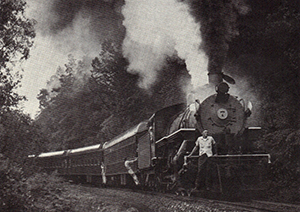
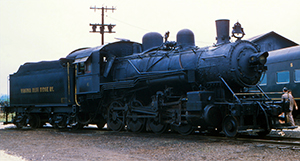
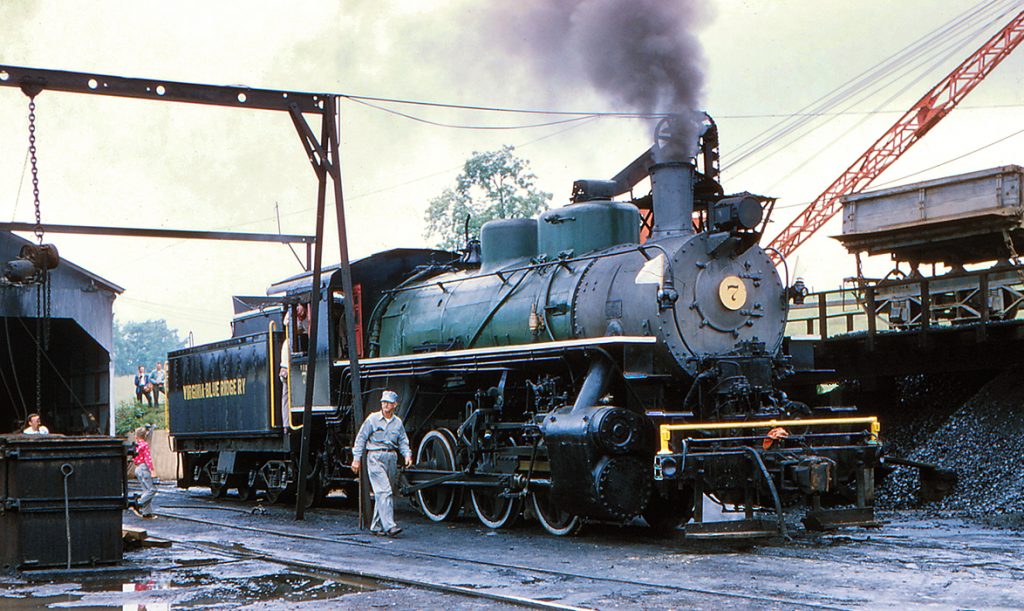
After the VBR converted to diesel power, Nos. 7 & 9 were the last steam engines to leave the property. No. 9 had been sold to Steam Trains, Inc. (which was made up of a group of Pennsylvania businessmen and rail enthusiasts) in late-1963. At the same time, No. 7 was privately sold to a Mr. Stout of Charleroi, PA, one of the founders of Steam Trains, but the engines never left Piney River. In June 1966 Steam Trains transferred the title to No. 9 over to their new subsidiary, New Hope & Ivyland Railroad (NH&I) in New Hope, PA. Both engines were ultimately shipped to New Hope, and plans were made to operate No. 9 in excursion service, where the locomotive would retain its VBR number. No. 7’s owner however, was forced out of the company in 1967 and the engine was then stored on a back siding in New Hope for several years.
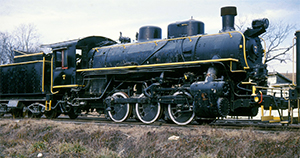
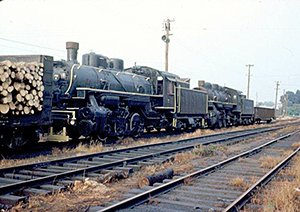
In 1970, No. 7 was sold to yet another private individual, who, like the person before him, did not have a good relationship with the NH&I management. As the 1970’s progressed, the locomotive could be found sitting derelict on a remote siding in the woods between Lahaska and Buckingham Valley, PA. It was during this time that various parts and appliances began to disappear from the engine.
In June 1976, the owner of No. 7 directed his attorney to sell the locomotive to the Menair-Fetzer Company with the provision that No. 7 had to be scrapped and not resold as a “complete locomotive” that could be restored. A private agreement was made between the Menair-Fetzer Company and Jimmy McHugh (who was president the NH&I at the time) for No. 7’s driving wheels, complete running gear, driving boxes, throttle, air compressor and reversing gear. The McHugh Company then supplied a crane for the disassembly of No. 7. The parts to be saved were weighed and then scrap iron of the same weight was loaded into two Conrail gondolas along with the remains of No. 7 to make up the gross scrap weight needed. Most of the rescued parts were used on No. 9 when it was rebuilt in 1976.
The sole reason for No. 7’s unfortunate scrapping was because the private owner could not afford to make the necessary repairs to the locomotive to have it moved off the NH&I and he also did not want the NH&I (or anyone else for that matter) to have it as an operating locomotive. Neither the New Hope & Ivyland Railroad, or the McHugh Family had a hand in the scrapping of No. 7 as so many have incorrectly written as first-hand factual information on the internet.
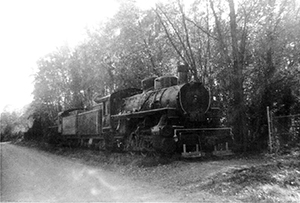
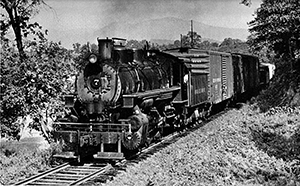
When unlucky No. 7’s remains were placed in those gondola cars, and ultimately sent off to a steel mill for reprocessing… it was a very sad end for one of the most widely photographed of all VBR steam locomotives.